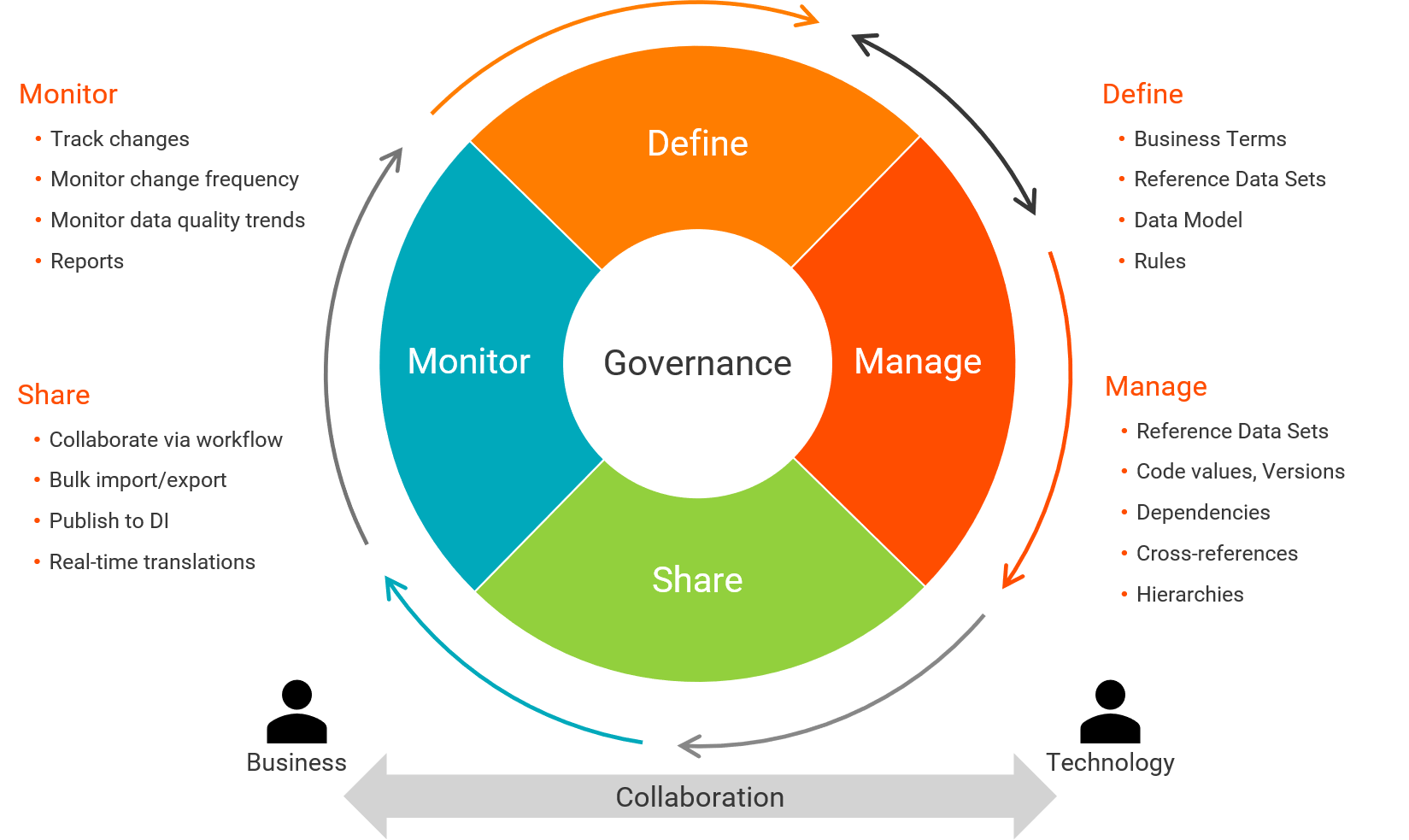Introduction
Informatica Reference 360 is a cloud-based service that enables organizations to create, manage, and govern reference data. Enterprise reference data (a subset of master data) is used throughout the organization for various project initiatives. Without managing a master reference data set, various businesses within the organization will depend on siloed copies of reference data. This leads to inconsistent data delivery and resolution to the business with a potential for negative financial consequences.
Reference data resides in various locations and formats. It is stored as lookup values in RDBMS, code values in spreadsheets, and hard-coded drop-down values in IT applications. Reference data is typically low in volume, non-changing, and it can be hierarchical.
Reference 360 is a purpose-built flexible solution that can manage a variety of reference data structures to support enterprise-wide reference data. Because Reference 360 resides in a single cloud platform, it can be easily accessed, governed, and shared across the organization. Organizations can license this service and start using the service immediately as there is no server platform required to host this service.
Reference Data Management Process

Getting Started
The Reference 360 journey begins when architects and stakeholders work together to plan to establish a single, centralized platform to manage enterprise-wide reference data. This data can be cleansed, consolidated, cross-referenced, and governed. Ideally, organizations manage different kinds of reference data such as Financial Terms, ISO Country codes, ISO state/province codes, and/or business specific code values.
Establishing a centralized reference data solution will need to include data modeling of the variations across the reference data, defining how reference data will be governed, and the integration of reference data from sources and to consumers.
Reference 360 Data Modeling
Modeling the structure to manage reference data in Reference 360 does not require RDBMS or Entity relationship modeling skills. A person with a Business Analyst or a Data analyst skillset can define the hierarchy-based relationships between reference data sets and code lists. Attributes in the code list can be defined as a template for the code values.
Code List cross walk is a useful feature for managing the same reference data representation across the enterprise. Enterprise applications can leverage the cross-walk information for a particular reference data to learn. Different businesses maintain different values for the same reference data.
Reference 360 Governance
Reference 360 has an intuitive user interface to load and manage the reference data sets and corresponding code lists. It has out-of-the-box roles which users can be assigned to. These roles align to a built-in approval workflow that provides auditing and approvals to reference data being added or modified. Email notifications can be sent to the assigned approver to approve/reject changes to the reference data. This provides greater auditing and control over the Enterprise Reference data.
Reference 360 Data Integration
The Reference 360 architect begins by first understanding the scope of the reference data planned for onboarding. The architect works with the various application owners that use the corresponding reference data. The architect discusses the best ways to extract the reference data with the application owners (either via CSV file or through a database connection). Reference data can be onboarded with a template-based import process and through API methods.
Reference data can be published through various methods. An easy and quick method is export reference data to flat files. Applications requiring automated integration with Reference 360 can leverage the API endpoints to extract the reference data as a full bulk load or as changes from a previous date.
Phased Approach
Informatica recommends beginning with a manageable scope in order to deliver early value and establish how to implement additional reference sets and code lists. Often this will focus on reference data aligning with the first consumers of the reference data. Identify the scope to start each build phase that can leverage the Reference 360 solution for the reference data requirements. MDM projects like Customer 360 (C360), Product 360 (P360) or Supplier 360 (S360), use a high number of reference tables as lookup tables. These projects can leverage the Reference 360 solution, providing necessary reference data in batch and real-time.
Organization dealing with multiple business verticals can build domain-based reference data sets. Prioritizing a domain that can be implemented quickly and integrate with consuming applications will, demonstrate the value of Reference 360 and realize ROI. Expand the project by building the reference data set for other domains. Lessons learned and best practices can be applied to expand on Reference 360 by building new reference data sets.
Table of Contents
RESOURCES
360 Engagement

PLAN

IMPLEMENT

MONITOR

OPTIMIZE
